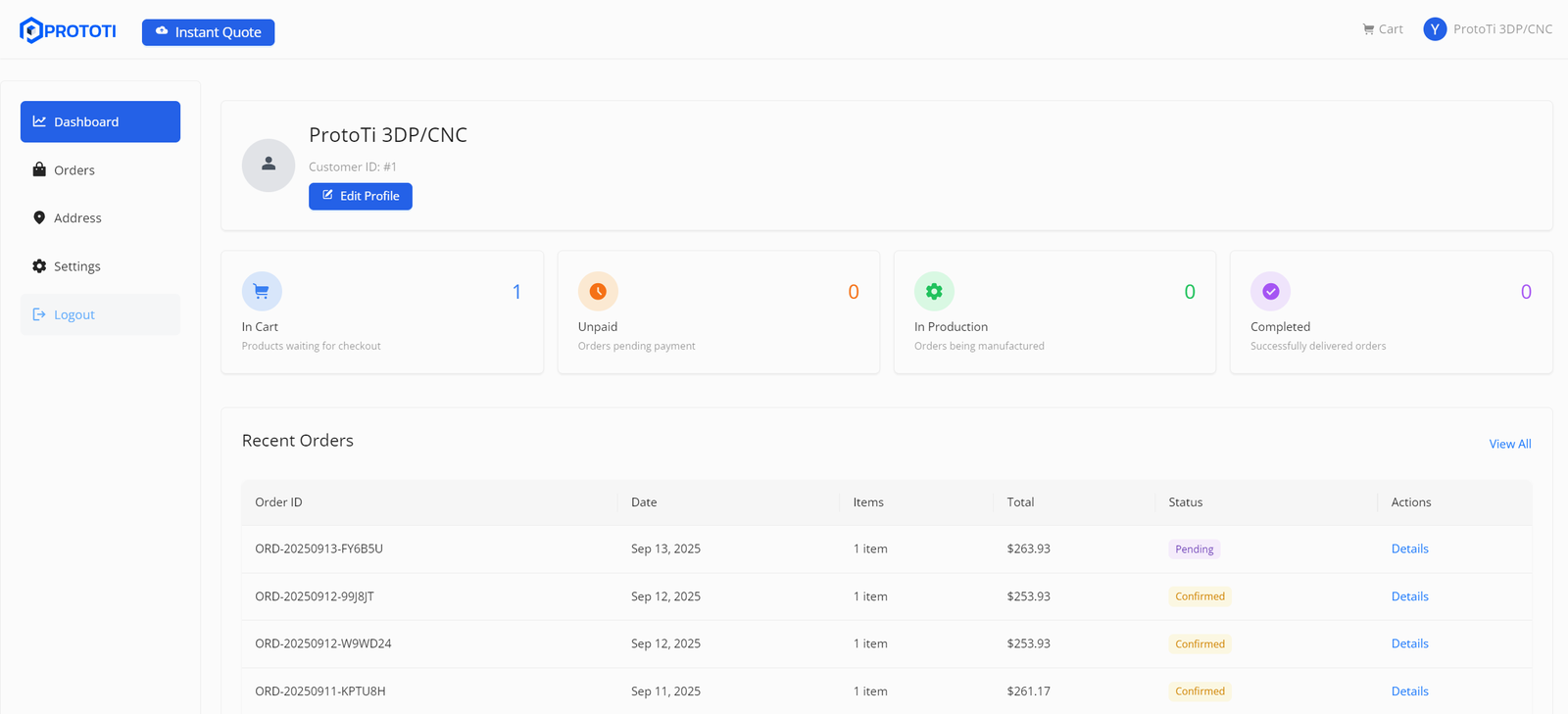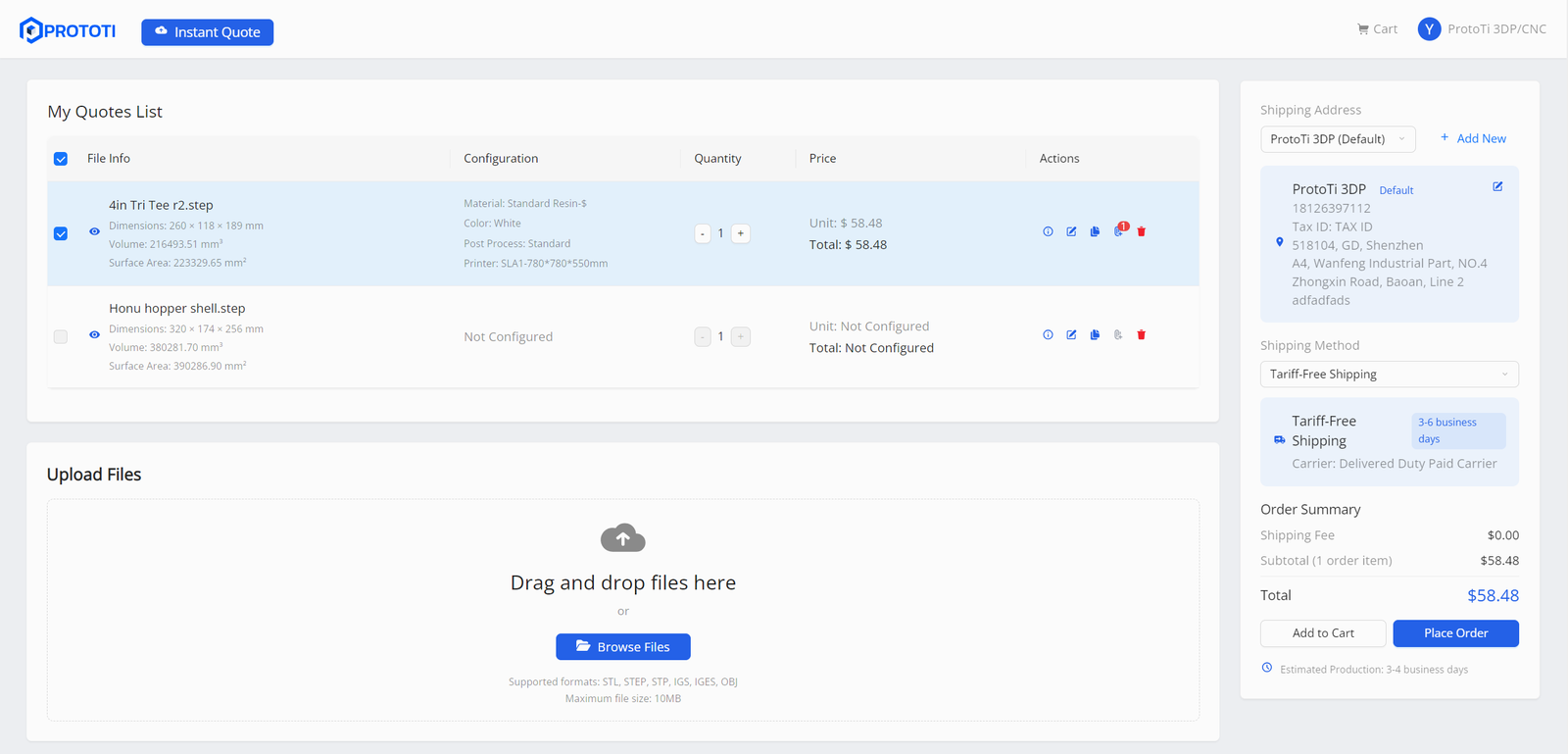🚀 Exciting News: New Quoter & Client Portal Launch 🎉
Dear Customers,
Our new online quoter and client portal are officially live!
From September to December, both old and new versions will run in parallel as a transition period.
✨ Special Offer:
Enjoy automatic quantity discounts — the more you order, the lower the unit price (up to 25% off for selected materials).
🌟 Already available:
-
⚡ Better user experience & faster server performance
-
🕒 More accurate delivery time estimates
-
📝 Simplified and faster order process
🔮 Coming soon:
-
🛠 Instant quote for CNC & other processes
-
📦 Order tracking & workflow updates
-
📧 New email notification system
-
📂 Batch upload & batch editing of models
-
🔍 Online DFM (Design for Manufacturability) checks
-
📊 Enhanced order panel with detailed statistics


Thank you for your support — we look forward to bringing you an even smoother ordering experience!
— ProtoTi
